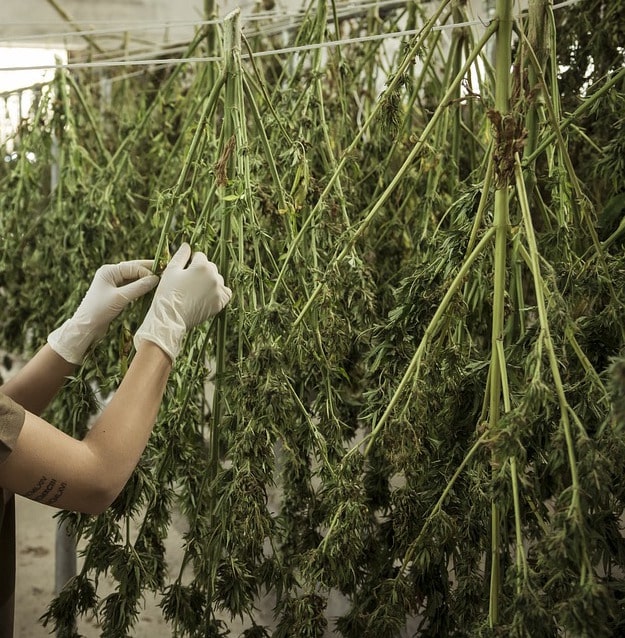Post-harvest processing including drying, extraction, and isolation techniques are crucial to improve the quality of cannabis products and continue the research, characterization, and identification of biologically active cannabis constituents. Tuning extraction and processing procedures allows increases in the yield of specific targeted compounds, to minimize extract refinements, and to improve extract purity.
The drying process is essential to prevent microbial and fungal growth and to enable long-term storage that also maintains the organoleptic properties of the final cannabis product. Across the various drying methods, it has been noticed that increasing the temperature and time during the process can induce the loss of valuable compounds like terpenes, thus the optimization of these parameters, in addition to humidity and ventilation rate, is crucial to enhance end product quality.
Air-drying is the oldest method to dry cannabis. [1] The whole plant or the separated inflorescences are hung on a string or placed on a drying screen in a room without light at about 18-25°C and 45-55% humidity. This slow drying method has the advantage of preserving the terpene and cannabinoid profiles, but it can induce uneven drying and could enhance the development of mold if the drying product is not treated properly or the humidity is not controlled during the process.
A faster method involves the use of ovens or vacuum desiccators, with or without air flow. These drying procedures have a disadvantage in that they can enhance the partial loss of the complex and specific cannabis bouquet and the result could be a flavorless extract lacking key components. Freeze-drying is generally considered as one of the leading options for obtaining the highest quality end products. While placing the plant at low temperatures, the water is removed from the sample by sublimation in a vacuum chamber and the phytochemical profile of the end product should resemble the one present in the raw plant. The operational costs are elevated because of the energy required to reach and maintain low temperatures, vacuum, and the long run time.
After drying, the plant material can be stored in the dark for few weeks at temperatures between 15-21°C and 45-55% humidity. This final post-harvest process is called curing and it can enhance the flavor and quality of cannabis. More studies are needed to understand the insights of this technique and to assess the parameters to obtain the best results. Moreover, additional studies regarding drying methods and the final post-processing cannabis curing could be beneficial to enhance the quality of the plant material to be extracted, thus the quality of the final cannabis product.
References:
[1] Lazarjani MP, et al. Processing and extraction methods of medicinal cannabis: a narrative review. Journal of Cannabis Research. 2021;3(1). doi:10.1186/s42238-021-00087-9
Image: https://unsplash.com/photos/lVLd6z5oVy8











